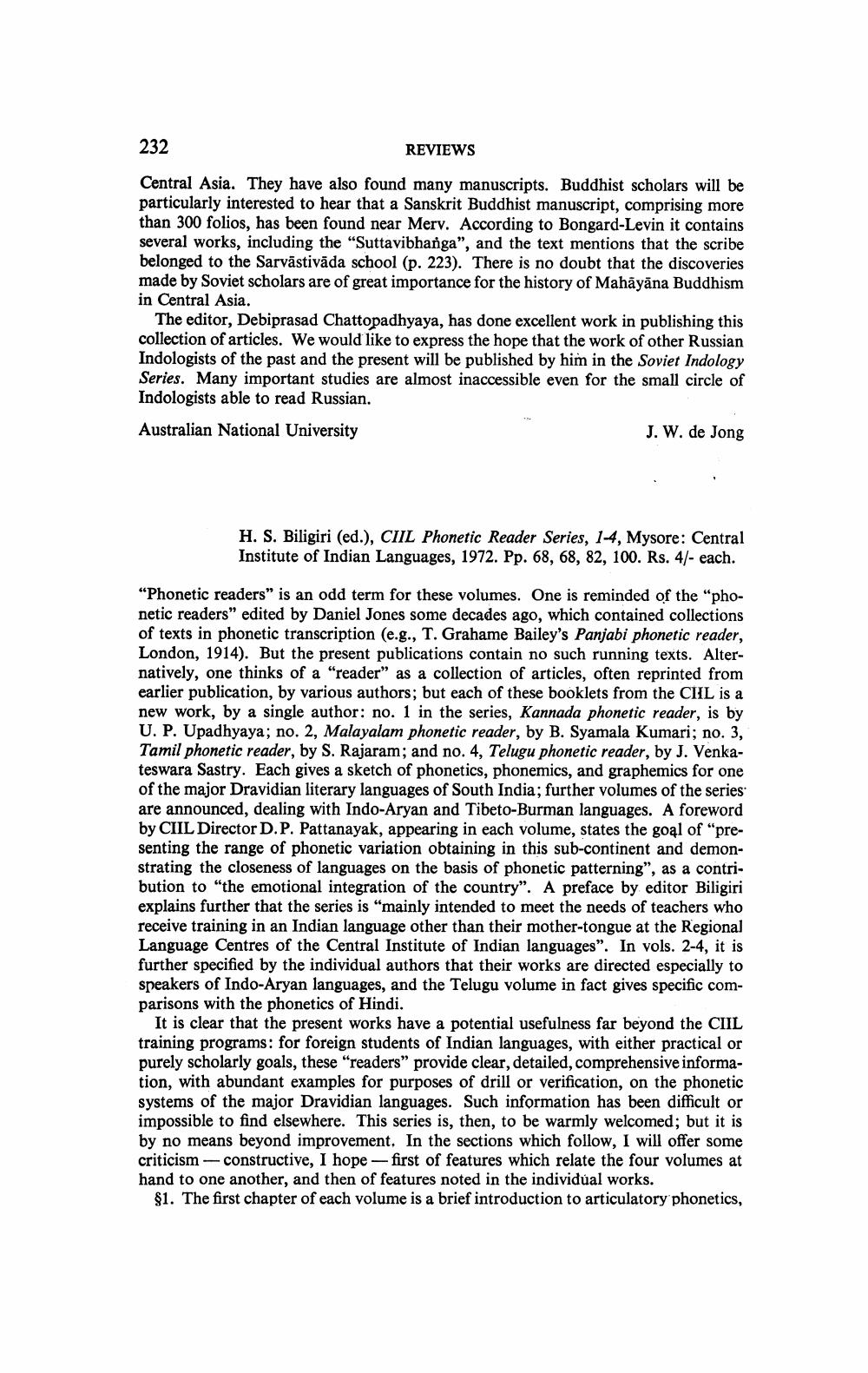Book Title: Reviews Of Different Books Author(s): Publisher: View full book textPage 8
________________ 232 REVIEWS Central Asia. They have also found many manuscripts. Buddhist scholars will be particularly interested to hear that a Sanskrit Buddhist manuscript, comprising more than 300 folios, has been found near Merv. According to Bongard-Levin it contains several works, including the "Suttavibhanga", and the text mentions that the scribe belonged to the Sarvastivada school (p. 223). There is no doubt that the discoveries made by Soviet scholars are of great importance for the history of Mahayana Buddhism in Central Asia. The editor, Debiprasad Chattopadhyaya, has done excellent work in publishing this collection of articles. We would like to express the hope that the work of other Russian Indologists of the past and the present will be published by him in the Soviet Indology Series. Many important studies are almost inaccessible even for the small circle of Indologists able to read Russian. Australian National University J. W. de Jong H. S. Biligiri (ed.), CIIL Phonetic Reader Series, 1-4, Mysore: Central Institute of Indian Languages, 1972. Pp. 68, 68, 82, 100. Rs. 4/- each. "Phonetic readers" is an odd term for these volumes. One is reminded of the "phonetic readers" edited by Daniel Jones some decades ago, which contained collections of texts in phonetic transcription (e.g., T. Grahame Bailey's Panjabi phonetic reader, London, 1914). But the present publications contain no such running texts. Alternatively, one thinks of a "reader" as a collection of articles, often reprinted from earlier publication, by various authors; but each of these booklets from the CIIL is a new work, by a single author: no. 1 in the series, Kannada phonetic reader, is by U. P. Upadhyaya; no. 2, Malayalam phonetic reader, by B. Syamala Kumari; no. 3, teswara Sastry. Each gives a sketch of phonetics, phonemics, and graphemics for one of the major Dravidian literary languages of South India; further volumes of the series are announced, dealing with Indo-Aryan and Tibeto-Burman languages. A foreword by CIIL Director D.P. Pattanayak, appearing in each volume, states the goal of "presenting the range of phonetic variation obtaining in this sub-continent and demonstrating the closeness of languages on the basis of phonetic patterning", as a contribution to "the emotional integration of the country". A preface by editor Biligiri explains further that the series is "mainly intended to meet the needs of teachers who receive training in an Indian language other than their mother-tongue at the Regional Language Centres of the Central Institute of Indian languages". In vols. 2-4, it is further specified by the individual authors that their works are directed especially to speakers of Indo-Aryan languages, and the Telugu volume in fact gives specific comparisons with the phonetics of Hindi. It is clear that the present works have a potential usefulness far beyond the CIIL training programs: for foreign students of Indian languages, with either practical or purely scholarly goals, these "readers" provide clear, detailed, comprehensive information, with abundant examples for purposes of drill or verification, on the phonetic systems of the major Dravidian languages. Such information has been difficult or impossible to find elsewhere. This series is, then, to be warmly welcomed; but it is by no means beyond improvement. In the sections which follow, I will offer some criticism - constructive, I hope -- first of features which relate the four volumes at hand to one another, and then of features noted in the individual works. $1. The first chapter of each volume is a brief introduction to articulatory phonetics,Page Navigation
1 ... 6 7 8 9 10 11 12 13 14 15 16
